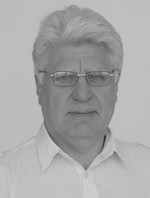Effects of ergogenic training tools on junior swimmers' anaerobic capacities
Фотографии:
ˑ:
Fizicheskaya kultura: vospitanie, obrazovanie, trenirovka №1-2017, pp.40-42
UDC 796.01.:612
Dr.Hab., Professor V.R. Solomatin1
Associate Professor, PhD J.L. Voytenko1
Postgraduate A.V. Egorov1
1Russian State University of Physical Culture, Sport, Youth and Tourism (GTSOLIFK), Moscow
The study was designed to assess the benefits of a permanently applied breathing trainer “capnicator” system on the 15-17 years-old swimmers’ physical working capacity rates, with 36 skilled junior swimmers selected as subject to the tests. The subjects were tested prior to and after the experimental training cycle by the following laboratory tests: anaerobic Wingate test; and the maximum anaerobic capacity test. The study data and analyses showed the breathing trainer system applied in the training process being of notable positive effect on the anaerobic workability rates (i.e. the anaerobic capacity and efficiency rates). The special high-intensity breathing training practices in the preparatory period were found to yield expressed post-training benefits as verified by the growth of the competitive success rates in the short distances of 50 m (by 1.00±0.04 s) and 100 m (by 3.15±0.08 s). The breathing training system applied in the swimming practices helped improve the maximum anaerobic capacity and speed rates with the relevant improvements in the sprint competitive accomplishments.
Keywords: junior swimmers, aerobic/ anaerobic capacity, ergogenic training tools.
References
- Voytenko J.L. Dinamika trenirovochnykh nagruzok i rabotosposobnosti yunykh plovtsov. Avtoref. dis. kand. ped. nauk [Dynamics of training loads and performance of young swimmers. PhD diss. abstract]. Moscow,1985, 22 p.
- Volkov N.I. Gipoksiya i anaerobnaya proizvoditelnost sportsmenov [Hypoxia and anaerobic performance of athletes]. Akklimatizatsiya i trenirovka sportsmenov v gornoy mestnosti [Acclimatization and training of athletes in highlands]. Alma-Ata, 1965, p. 103.
- Solomatin V.R., Bulgakova N.Zh., Solomatin V.R., Zhuravik A. Srochny trenirovochny effekt i sistematizatsiya spetsialnykh trenirovochnykh uprazhneniy v zavisimosti ot urovnya razvitiya aerobnykh i anaerobnykih vozmozhnostey plovtsov vysokogo klassa [Urgent training effect and organization of special training exercises with regard to aerobic and anaerobic capacities of highly skilled swimmers]. Teoriya i praktika fiz. kultury, 1996, no. 1, pp. 37-39.
- Solomatin V.R., Vovk E.E. Otsenka perspektivnosti yunykh plovchikh na osnove ucheta ikh biologicheskoy zrelosti, fizicheskogo i funktsionalnogo razvitiya [Assessment of prospects of young swimmers in view of their biological maturity, physical and functional development]. Fizicheskaya kultura: vospitanie, obrazovanie, trenirovka, 1997, no. 2, pp. 42-45.
- Solomatin V.R. Kriterii srochnogo trenirovochnogo effekta spetsialnykh uprazhneniy i individualizatsiya podgotovki plovtsov vysokoy kvalifikatsii [Criteria for urgent training effect of special exercises and individualization of training of highly skilled swimmers]. Teoriya i praktika fiz. kultury, 2008, no. 10, pp. 68-71.
- Solomatin V.R. Individualizatsiya mnogoletney trenirovki v sportivnom plavanii [Individualization of long-term training in competitive swimming]. Moscow: Fizicheskaya kultura publ., 2009, 241 p.
- Solomatin V.R. Srochny trenirovochny effekt i sistematizatsiya spetsialnykh uprazhneniy v zavisimosti ot urovnya razvitiya funktsionalnykh vozmozhnostey plovtsov vysokogo klassa [Urgent training effect and systematization of special exercises with regard to functionality levels of highly skilled swimmers]. Uch. zapiski un-ta im. P.F. Lesgafta, 2009, no. 10 (56), pp. 97-101.
- Solomatin V.R. Variativnost srochnykh trenirovochnykh effektov kak osnova sistematizatsii spetsialnykh uprazhneniy plovtsov [Systematization of swimmers' special exercises based on variability of urgent training effects]. Vestnik sportivnoy nauki, 2010, no. 2, pp. 25-27.


